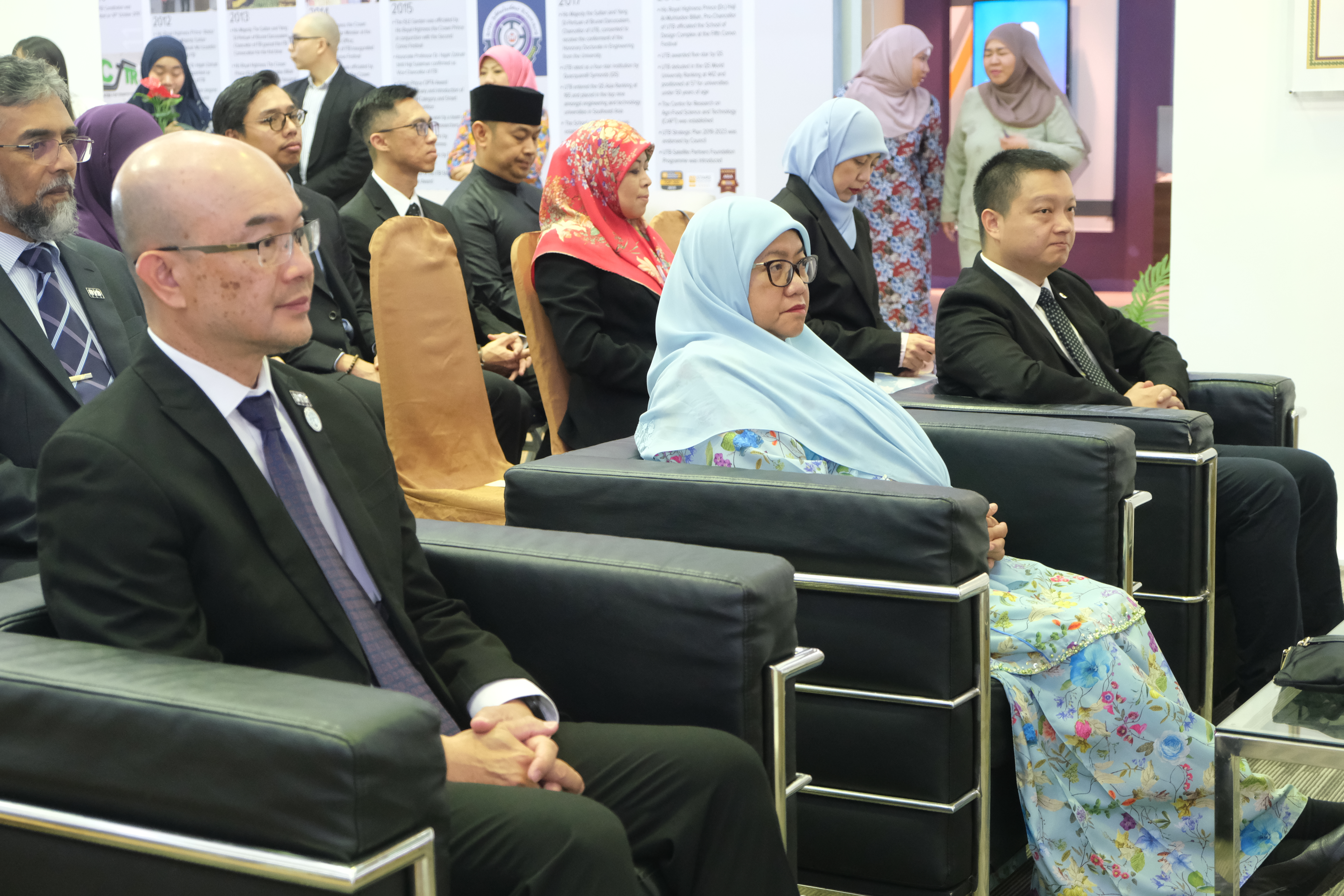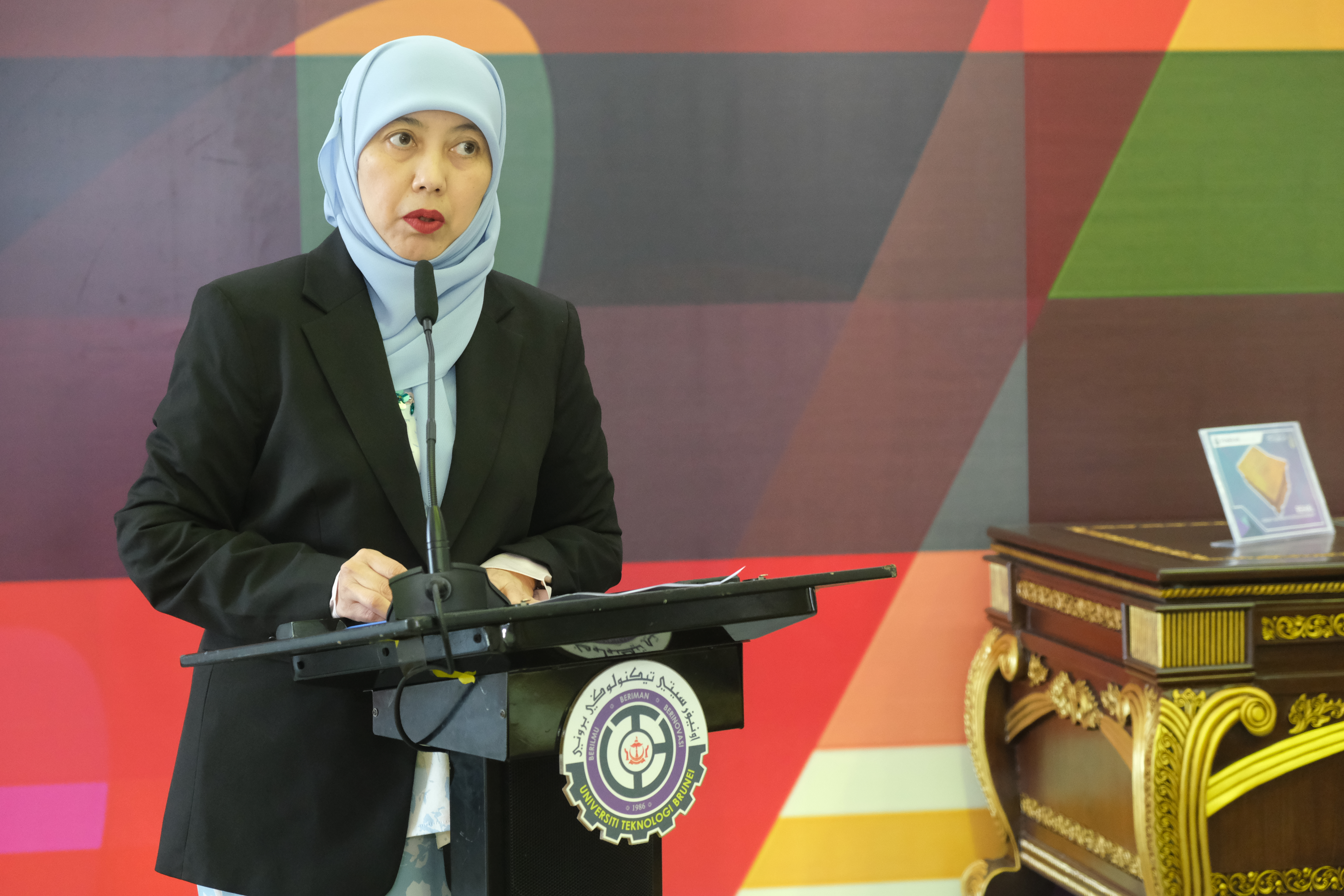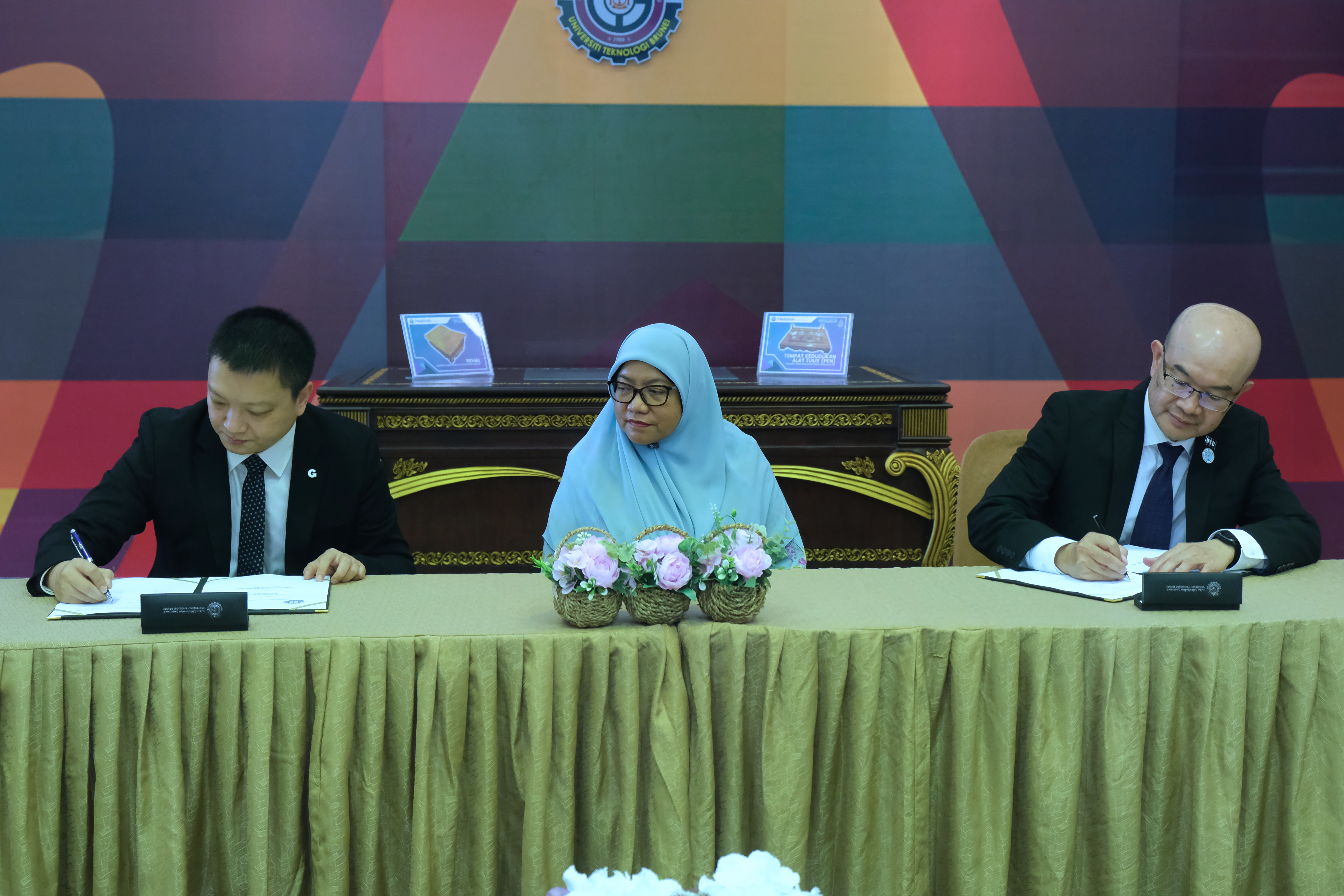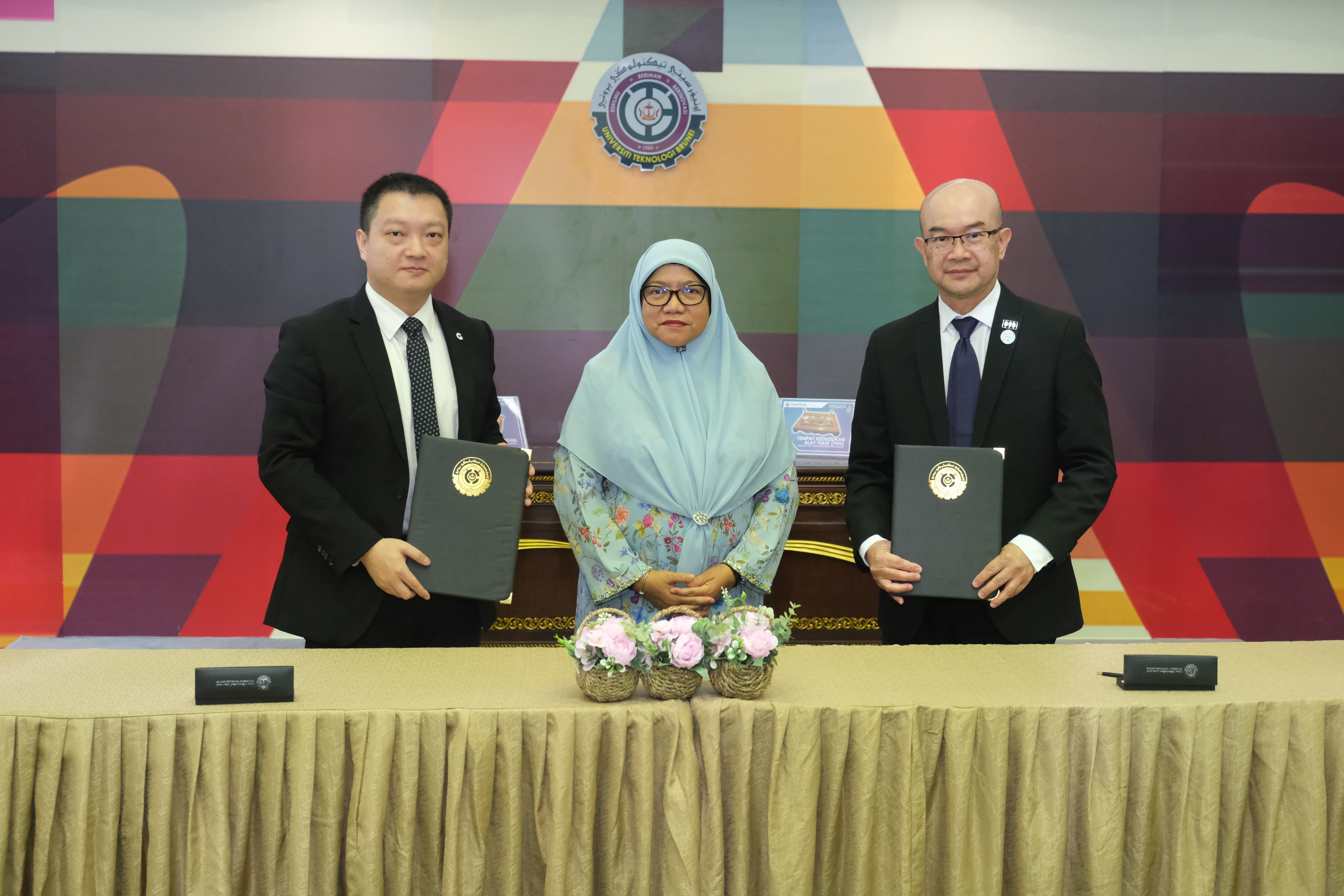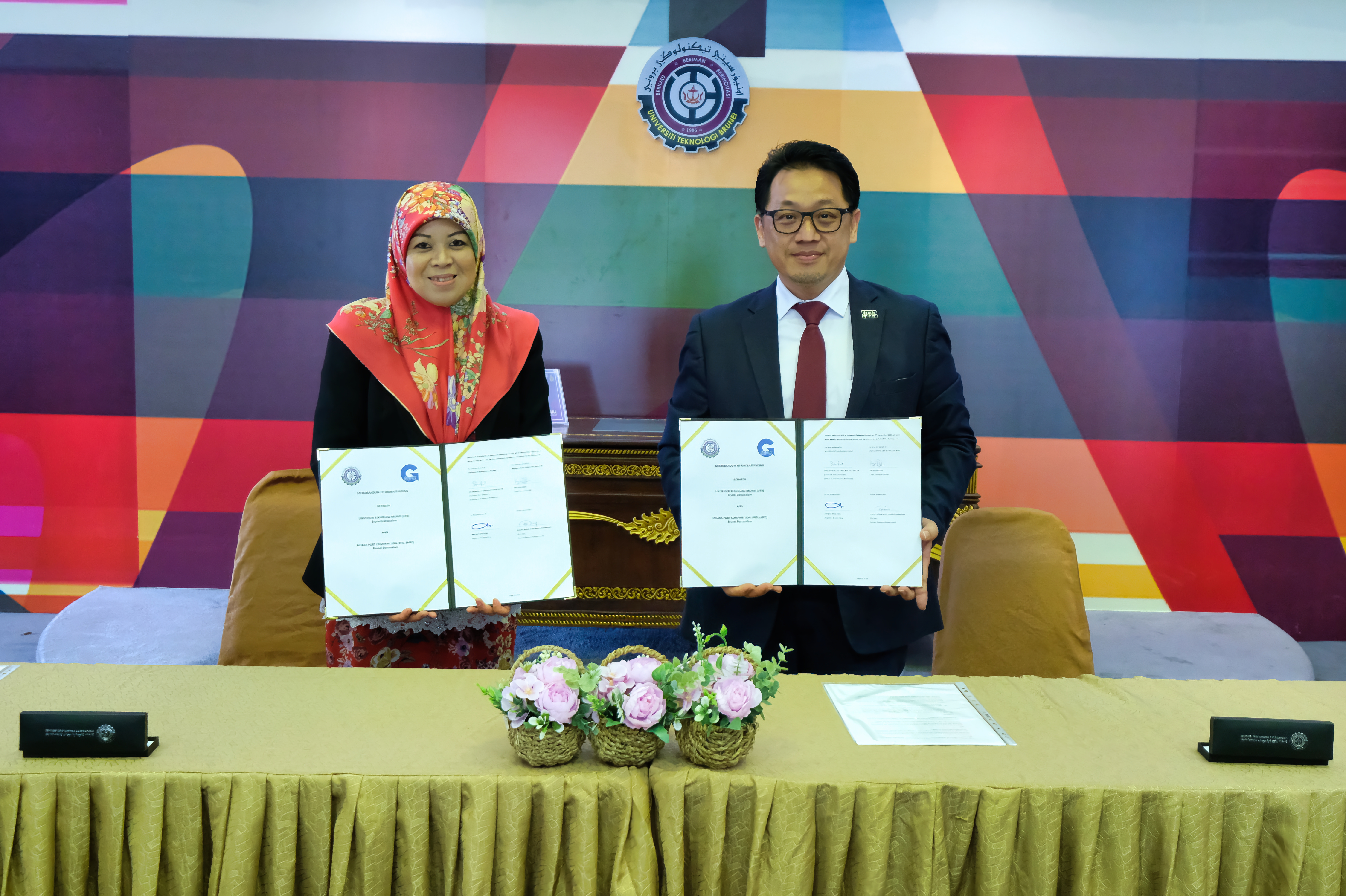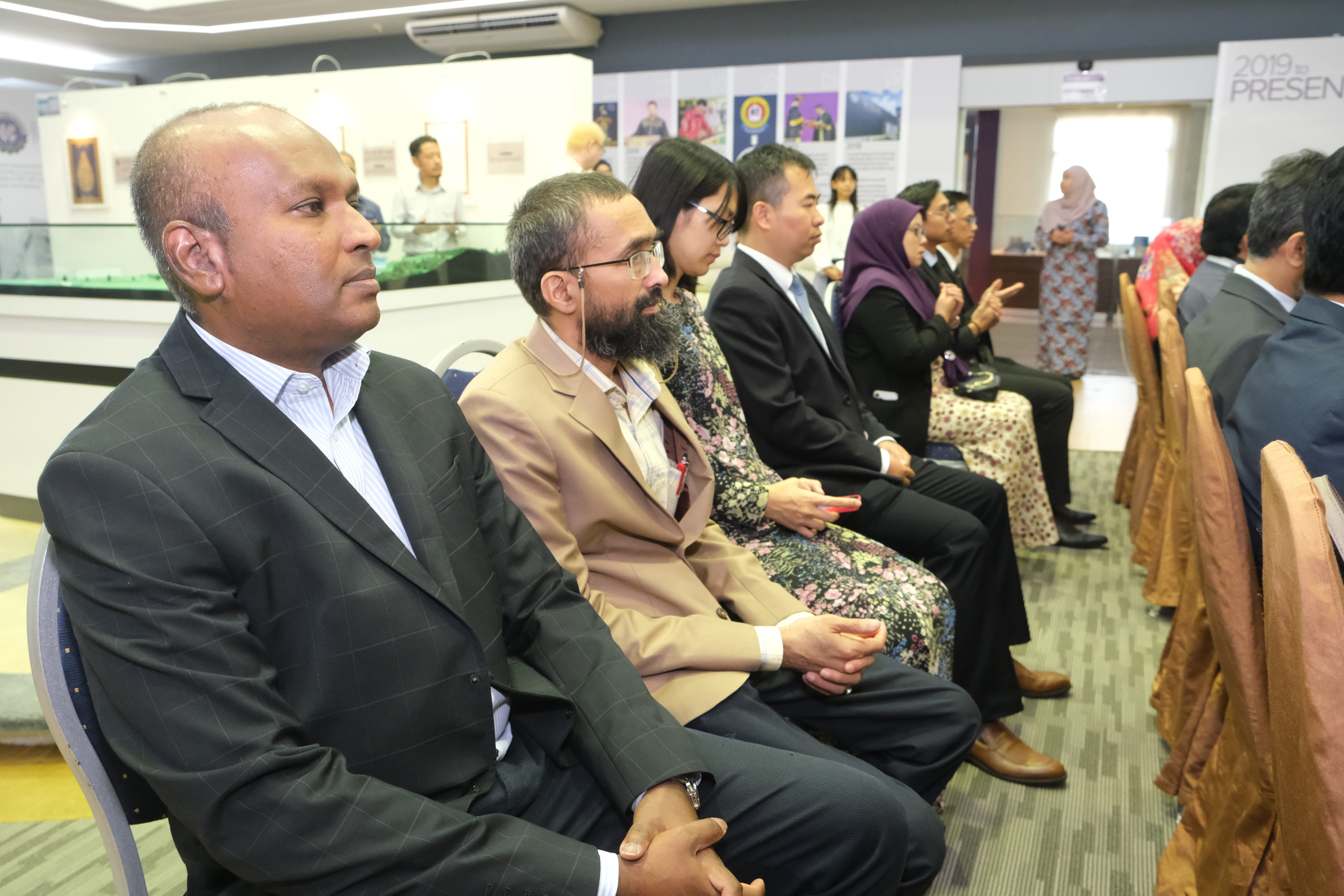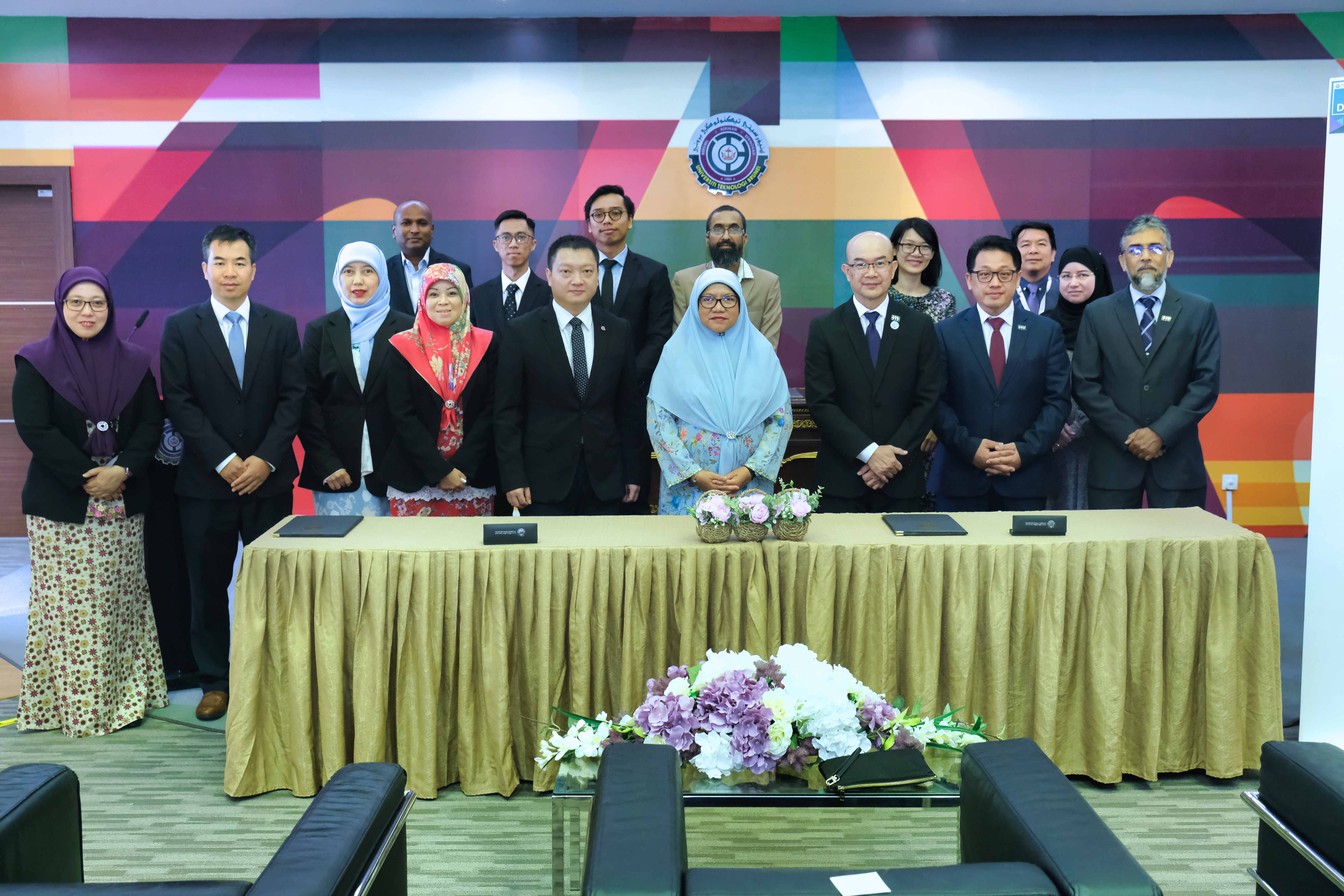Universiti Teknologi Brunei (UTB) and Muara Port Company Sendirian Berhad (MPC) have entered into a Memorandum of Understanding (MoU), marking a significant milestone in their journey towards innovation and Industry transformation. The MoU signing ceremony took place at the Pearl of UTB.
Yang Mulia Dr. Mohammad Saiful bin Haji Omar, the Assistant Vice-Chancellor (External and Industry Relations) of UTB, signed on behalf of the University, while Yang Mulia Mr. Lyu Guoli, Chief Finance Officer of MPC, represented the company. Serving as witnesses were Yang Mulia Mr. Lim Chui Hua, Registrar and Secretary for UTB, and Yang Mulia Hajah Azian binti Haji Mohammad, Manager of the Human Resource Department for MPC.
The Guest of Honour at the event was Yang Mulia Datin Paduka Professor Dr Dayang Hajah Zohrah binti Haji Sulaiman, Vice-Chancellor of UTB. The ceremony commenced with welcoming remarks from Yang Mulia Dr. Fadzliwati binti Mohiddin, Acting Assistant Vice-Chancellor (Academic Affairs) and Dean of UTB School of Business, in which she highlighted the significance and potential of the collaboration.
The Memorandum of Understanding establishes a collaborative partnership between UTB, particularly UTB School of Business, and MPC, focusing on several areas of shared interest. These areas include human capacity development particularly in logistic and port industry for Bruneians. The MoU also aims to advance academic, research, and technological endeavours while fostering innovation, development, and mutual growth research. This can be supported by industrial internship, working-research visits, training, as well as industrial engagement.
Apart from promoting innovation and knowledge exchange, the collaboration also symbolises a joint dedication to build leadership qualities, cutting-edge skill sets and industry connection. Thus, it has the potential to bring about positive impacts not only on both institutions but also on their respective communities.


